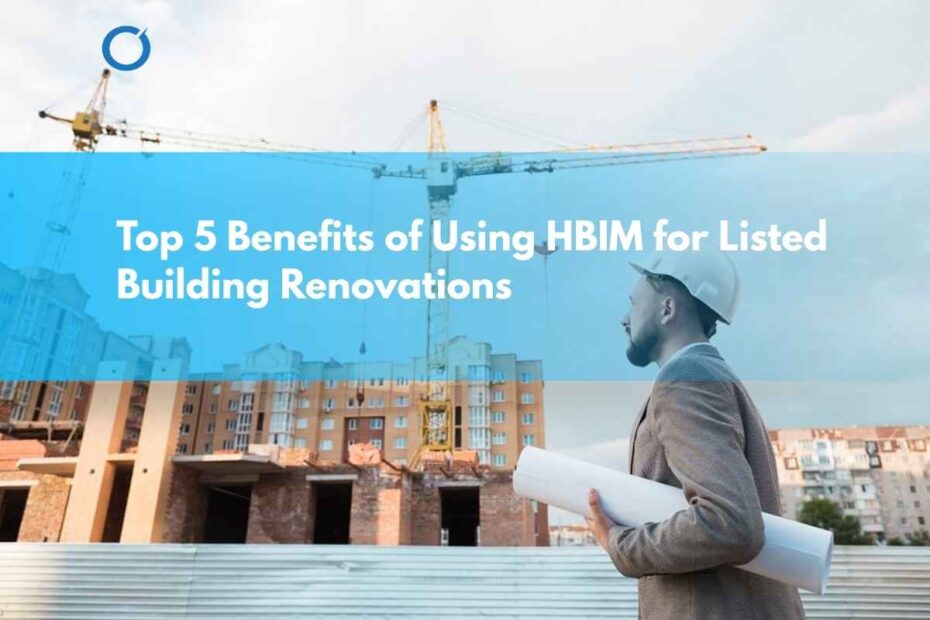In 2025, Historic Building Information Modeling (HBIM) is transforming the way we approach listed building renovations in the UK, offering unmatched precision and efficiency. Renovating heritage buildings comes with unique challenges, such as preserving historical integrity while meeting modern standards. This blog explores the top 5 benefits of using HBIM for listed building renovations, demonstrating how this innovative technology ensures successful outcomes for heritage projects.
What is HBIM and Why It Matters for Listed Buildings
Historic Building Information Modeling (HBIM) combines advanced 3D modeling with data-rich digital tools to manage heritage building projects. Unlike traditional BIM, HBIM is tailored for historic structures, enabling precise documentation and restoration. By creating a digital twin for heritage, HBIM supports architects, engineers, and conservationists in preserving the UK’s rich architectural legacy.
The Role of HBIM in Heritage Preservation
HBIM for historic preservation starts with capturing accurate data through technologies like Scan to BIM Modeling Services UK. This process creates detailed 3D models, ensuring every architectural feature is documented. These models serve as a foundation for planning renovations while respecting the building’s historical significance.
- Preserves authenticity: HBIM ensures renovations align with original designs.
- Streamlines planning: Digital models reduce errors during restoration.
- Enhances collaboration: Stakeholders access a single source of truth.
Top 5 Benefits of Using HBIM for Listed Building Renovations
1. Enhanced Accuracy in Documentation and Planning
HBIM for listed buildings ensures unparalleled accuracy in capturing and documenting historical structures. Using Scan to BIM Modeling Services UK, laser scanning and photogrammetry create precise 3D models of heritage buildings. These models allow stakeholders to plan renovations with minimal risk of damaging historical elements.
- Accurate measurements reduce errors in restoration work.
- Detailed models preserve intricate architectural details.
- Our 3D BIM Modeling Services UK ensure high-fidelity digital twins for planning.
2. Improved Preservation of Historical Integrity
HBIM for historic preservation safeguards the authenticity of listed buildings. By creating a digital twin for heritage, HBIM enables teams to analyze the building’s condition and plan interventions that respect its historical value. For instance, CAD to BIM Conversion Services UK transform 2D drawings into 3D models, ensuring renovations align with original designs.
- Protects original materials and craftsmanship.
- Ensures compliance with UK heritage regulations.
- We offer Architectural BIM Modeling Services UK to maintain historical accuracy.
3. Efficient Clash Detection and Risk Mitigation
BIM for heritage buildings includes advanced BIM Clash Detection Services UK to identify conflicts between new and existing elements. HBIM models integrate structural, mechanical, and electrical systems, ensuring seamless coordination. This minimizes costly rework and protects the building’s heritage features during renovation.
- Detects clashes before construction begins.
- Reduces risks of structural damage.
- Our MEP BIM Modeling Services UK enhance system integration.
4. Streamlined Project Management with 4D and 5D BIM
Building renovation BIM leverages 4D and 5D BIM Services UK to enhance project scheduling and cost management. 4D BIM adds time-based sequencing, while 5D BIM incorporates cost estimates, enabling precise planning for listed building renovations. This ensures projects stay on time and within budget.
- 4D BIM visualizes construction phases for better planning.
- 5D BIM provides accurate cost forecasting.
- We provide BIM Outsourcing Services UK for efficient project delivery.
5. Support for Sustainable Renovations
Heritage BIM promotes sustainable practices by optimizing material use and energy efficiency. HBIM models analyze the building’s performance, identifying opportunities to integrate modern systems without compromising historical value. This aligns with the UK’s 2025 sustainability goals for heritage buildings.
- Reduces waste through precise material planning.
- Enhances energy efficiency with modern MEP systems.
- Our Structural BIM Modeling Services UK ensure sustainable structural upgrades.
Real-World Impact: HBIM Case Studies in the UK
In 2025, HBIM case studies UK demonstrate its transformative impact. For example, a recent renovation of a Grade II listed building in London used HBIM to preserve ornate facades while integrating modern HVAC systems. By leveraging Scan to BIM Modeling Services UK, the project team created a digital twin, reducing errors by 30% and completing the project ahead of schedule. Similarly, our BIM Outsourcing Services UK supported a heritage project in Edinburgh, streamlining collaboration between UK and Indian teams.
Conclusion: Why HBIM is Essential for Listed Building Renovations in 2025
The top 5 benefits of using HBIM—accuracy, preservation, clash detection, project management, and sustainability—make it indispensable for listed building renovations. By adopting HBIM for listed buildings, stakeholders can protect the UK’s heritage while meeting modern standards. Ready to transform your heritage project?
Contact us for expert Architectural BIM Modeling Services UK, Structural BIM Modeling Services UK, and more to ensure a seamless renovation process.
